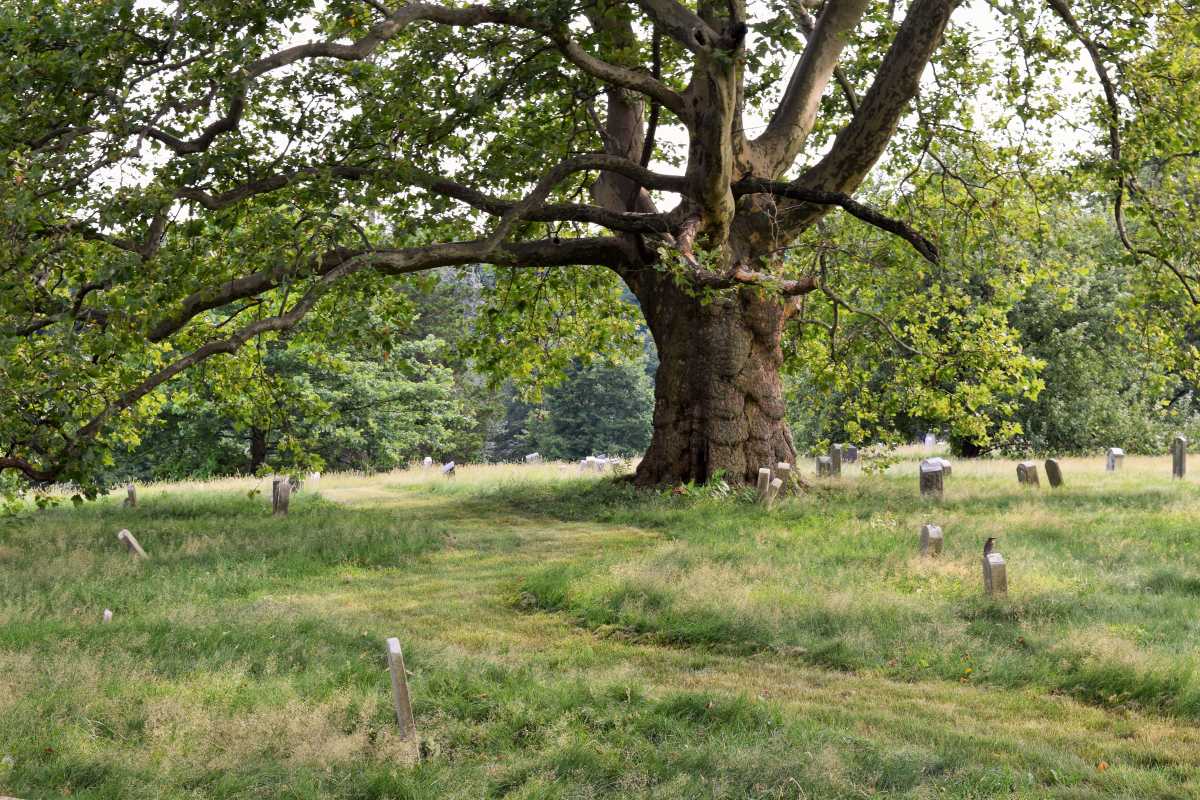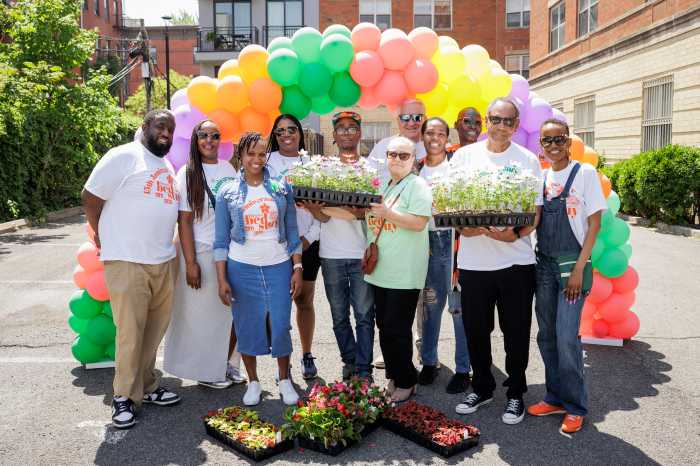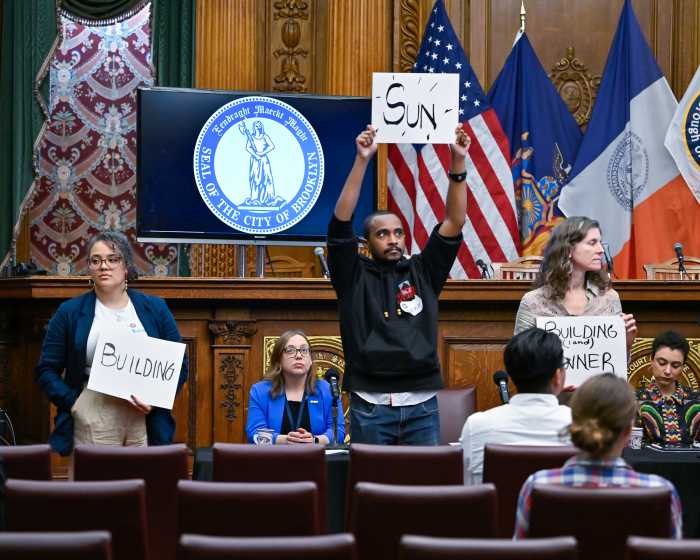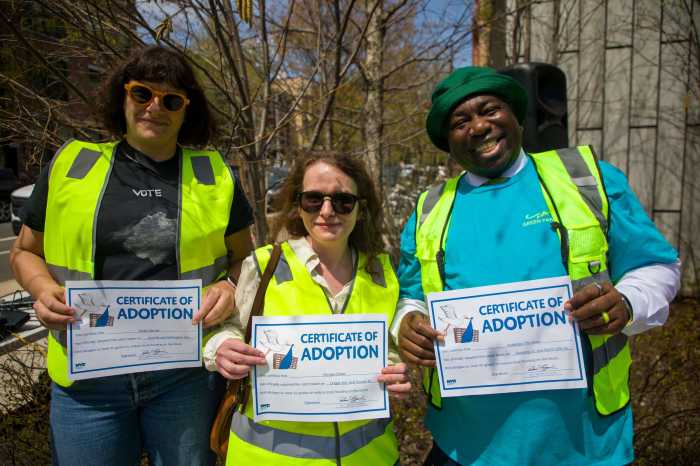A tree grows in Green-Wood Cemetery — or, it will soon.
An infusion of federal funds allocated to improve access to greenspaces and fight climate change will allow the graveyard to plant 1,500 new trees over the next three years and care for 140 mature trees already thriving at Green-Wood, hopefully extending their lives and vitality. With the $498,035 award, funded by the federal Inflation Reduction Act and awarded by the New York State Department of Environmental Conservation, Green-Wood hopes to expand canopy cover at the cemetery to 35%, meaning more than one-third of the graveyard will be shaded by trees.
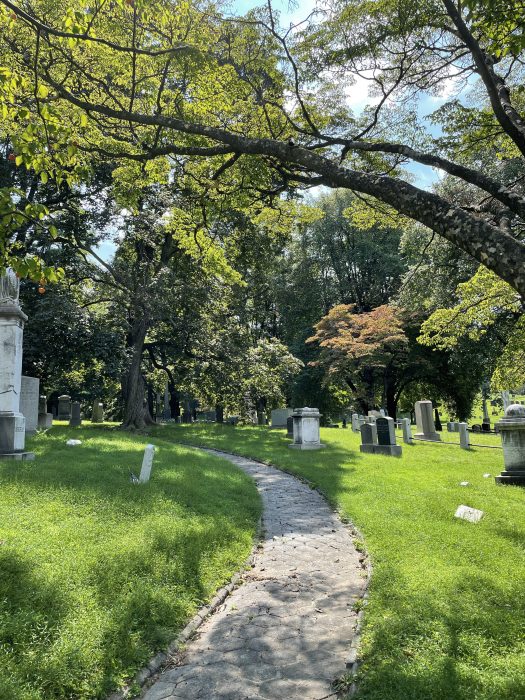
Trees and greenery improve air quality and lessen the Urban Heat Island effect, which is known to make New York City roughly eight degrees Fahrenheit hotter than the surrounding area. According to news outlet THE CITY, temperatures in areas right outside the cemetery can be up to 11 degrees hotter than average — while temps inside the graveyard are significantly cooler.
According to the cemetery’s vice president of horticulture, Joseph Charap, Green-Wood’s 7,000 existing trees already capture more than 200 tons of carbon, remove 8,000 pounds of ozone and filter more than 2,000 pounds of particulate matter from the air every year, and help to capture stormwater run-off.
“These substantial benefits to Green-Wood’s surrounding neighborhoods will be further enhanced by the new planting and maintenance activities we’ll be able to perform as a result of this grant,” Charap said in a statement. “Green-Wood has a long history of completing DEC-funded projects with great success, and we are thrilled to have the opportunity to do so again.”
With the new funding, project managers will plant 500 trees at Green-Wood annually, focusing on biodiversity and tree species well-adapted to the effects of climate change: heat, precipitation, and pollution, said Green-Wood’s Director of Living Collections and Curator Sara Evans. The cemetery’s team will use the U.S. Forest Service Climate Change Tree Atlas to make their selections as well as choose species already thriving at Green-Wood, like oak and hickory, sweetgum, American holly, and persimmon trees.
Caring for the mature trees is just as important as planting new ones. Older, full-grown trees store more carbon than young ones, so keeping them alive is critical. The trees tended to with the new funding will be those in need of root collar excavation, a “delicate process” where arborists remove the soil around the base of the tree and remove any roots “girdling” the tree.
“Not correcting this risks the long term health and longevity of the tree by effectively suffocating and choking the tree of nutrients and water,” Evans explained. “The trees designated for this maintenance include many of our older maples, lindens, pin oaks, and a few Atlas cedars in the collection.”
Brooklynites will be able to get directly involved in the project through Green-Wood’s volunteer and education programs, like the “Guardians of the Dicots,” where volunteers help arborists weed, mulch, and water young trees. The cemetery is open to the public every day — inviting visitors to walk, enjoy nature, and visit loved ones or historical figures.
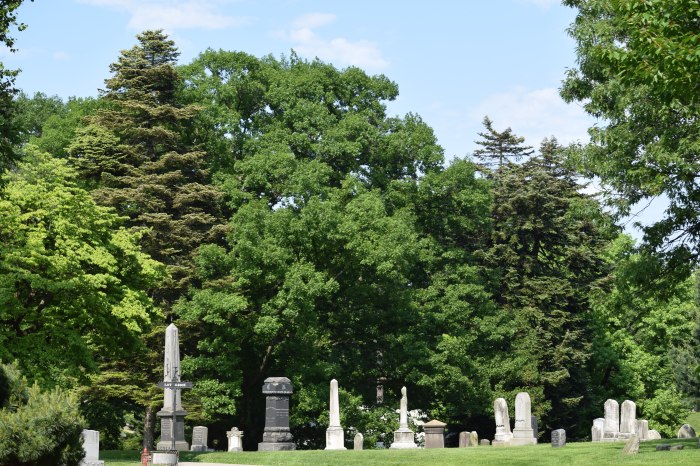
Green-Wood Cemetery has a number of additional climate projects in the works — the graveyard has transitioned away from traditional, close-cropped lawns in favor of “managed meadows” with long grasses and other shrubbery, native plants, and wildflowers. Those meadows reduce the need for gas-powered mowers, are more resilient to climate change, and offer habitats to the multitude of species that call Green-Wood home: birds, insects, and more. Many species of migratory bird stop over at Green-Wood during their long journeys each fall and spring, and a new species of beetle was discovered there in 2018.
Earlier this year, the cemetery received DEC funding to fight an invasive plant found in one of its ponds. If left to its own devices, the plant — known to grow thickly over the surface of the water, cutting off light and oxygen to native plant species and animals — could spread through Brooklyn’s sewer systems to other bodies of water, according to Green-Wood’s horticulturalists.


